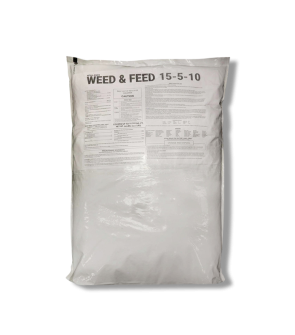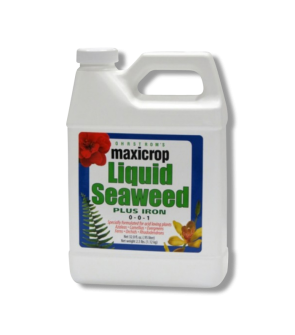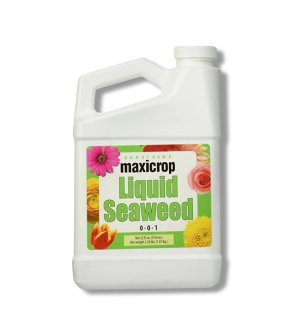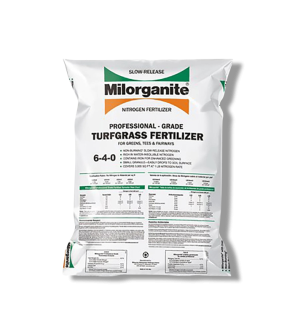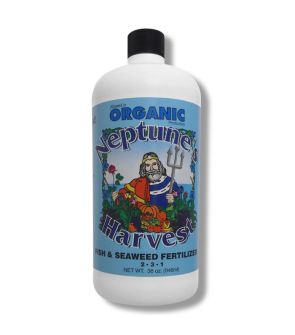Spring Fertilizer Tips
Most Effective Products
Spring Fertilizer Tips: How To Fertilize Your Lawn During The Spring
This page is a general DIY guide on the proper steps and timing of a spring fertilizer for both cool-seasoned and warm-seasoned turf. By using the products and methods suggested throughout this article you can create a lush, and green lawn with a spring fertilizer. Follow this guide and use the recommended products or methods for a more uniform fertilizer application within your homes yard to ensure its health for the following seasons.
Keeping your lawn looking good all year can be a challenge, but it can begin with a proper spring fertilizer application. Early spring is an ideal time to fertilize the lawn in various parts of the United States since soil temperatures are beginning to warm up and grass roots are actively growing.
Depending on where you live in the country, spring is usually classified as when the ground and air temperatures allows plants to take up nutrients. Each turfgrass needs will vary so it is important to lend a helping hand to your lawn by providing it with the exact nutrients it needs with a spring fertilizer.
Getting the spring fertilizer process right results in a beautiful and thick lawn. However, when its applied incorrectly or at the wrong time then it can cause weed growth, grass burns, or possible death of your lawn. Learning when, what, and how to apply a spring fertilizer is as important as choosing the right one for your turf. This can all be done by following the suggestions in this DIY guide.
Why Do You Need to Fertilize in the Spring

Your lawn is a living thing that requires the right amount of energy and nutrients to thrive. During winter, many grasses stop growing and rely on a store of nutrients to survive harsh conditions.
By spring, your turfgrass has spent much of its stored energy and need more when consumption increases and the active growth starts. Due to this, fertilizing in the spring becomes important as it helps to encourage strong root growth for the upcoming stressful seasons and encourages top growth for improved color in your turf. Not only does it jumpstart your lawn for the rest of the growing season, but it also repairs parts of your lawn that were damaged by winter temperatures and disease.
Which Fertilizer To Use in the Spring

Fertilizer comes in many different forms to feed lawns, but it's primary formulations are either liquid or granular. To select the proper fertilizer you can perform a simple soil test to determine what and how much nutrients are missing in your turf. Depending on your turf type and climate, the best spring fertilizer will vary.
Typically, we recommend using a slow-release fertilizer that contains nitrogen, phosphorus, and potassium as these are the standard nutrients for growth and health of turf-grasses. Slow-release fertilizers are mainly granular, and are recommended because they slowly release the nutrients to the soil over time to encourage growth for the rest of the season.
When to Apply Lawn Fertilizer in the Spring

Depending on where you are in the country, your turf type, and the local climate will determine when to apply your fertilizer in the spring.
Turf falls into one of these two categories:
Warm-seasoned turf is Centipede grass, St. Augustine, Bermudagrass, and Zoysia grass. Cool-seasoned turf is Kentucky bluegrass, perennial ryegrass, fine fescue, and tall fescue.
As a general rule, you will want to wait until your turf is out of its winter dormancy and the soil temperatures are consistently at the following rates for the turf type. If the ground is still frozen then the fertilizer will not penetrate the soil and reach the turf roots.
Fertilize your cool-seasoned lawn at the start of the spring when temperatures are still cool and the soil temperatures are between 50 to 65 degrees Fahrenheit, which could be late February through early April. Warm-seasoned turf can be fertilized for spring from early March to late April when temperatures are warm and the soil temperature is between 65 to 70 degrees Fahrenheit.
Both turf types can only have one application during the spring season.
How to Apply Fertilizer in the Spring

The way to apply fertilizer to your lawn during the spring will depend on the type of product you choose. Liquid fertilizers will need to be applied with either a handheld pump sprayer, backpack sprayer, or hose-end sprayer depending on its product label instructions. Granular fertilizers will need to be applied with a type of spreader such as a push or broadcast spreader.
For a general spring fertilizer, check out Solutions 15-5-10 Weed & Feed Fertilizer with Trimec. Solutions 15-5-10 Weed & Feed Fertilizer with Trimec is a slow-release granular fertilizer that can be used on warm-seasoned turf and cool-seasoned turf during the spring season to promote growth and fight against various weed growth.
Determine how much spring fertilizer to use by measuring the square footage of the treatment area. To get the square footage of a rectangular shaped lawn, just multiply the areas length by its width. Irregular shaped lawns use different formulas, and they can also be broken down into simpler shaped and added together. Don't forget to subtract the areas of spaces you do not intend to treat.
Prepare your lawn by mowing it to its normal height at least 1 to 2 days before application. You will also need to thoroughly water your lawn one day before treatment. Apply 3.2 to 4 lbs of Solutions 15-5-10 Weed & Feed Fertilizer with Trimec per 1,000 sq. ft. of turfgrass. If you have measured an area of 2,000 sq. ft., you would need to evenly distribute between 6.4 to 8.0 lbs. of fertilizer over your yard.
When its time for application, load your spreader with the measured amount of Solutions 15-5-10 Weed & Feed Fertilizer with Trimec. Evenly apply the product throughout your treatment area by broadcasting half of your granules in parallel lines once across the area. Broadcast the other half at a perpendicular angle to cover the area in the middle. Once the product is fully applied, water it in.
With even distribution, your lawn will gain the nutrients it needs and grow evenly and without any patches.
Key Takeaways
Can You Fertilize Too Early in the Spring Season?
- Many homeowners mistake spring fertilizer applications at the very beginning of the year, causing them to expect their lawn to quickly green up. But if you apply fertilizers too soon then you cause turfgrasses to awaken and grow out of season. Wait until your turfgrass begins to turn green in color and soil temperatures are above 50 degrees Fahrenheit. Feeding your cool-seasoned lawn from late March to early April and warm-seasoned turf from early March to late April will provide your turfgrass with the nutrients it needs at the time they are needed.
Should You Seed or Fertilize in the Spring?
- You will want to fertilize your lawn first to promote a strong and healthy root system before seeding.
What Happens If You Put Too Much Fertilizer on Lawn
- Applying too much fertilizer on your lawn during the spring can cause the salt to build-up in the turf resulting in fertilizer burn. This type of damage can look like limp or black roots, dry grass, and discoloration of turf.
-
-
-
-
-
Milorganite Pro 6-4-0$50.49 - $50.49
-


